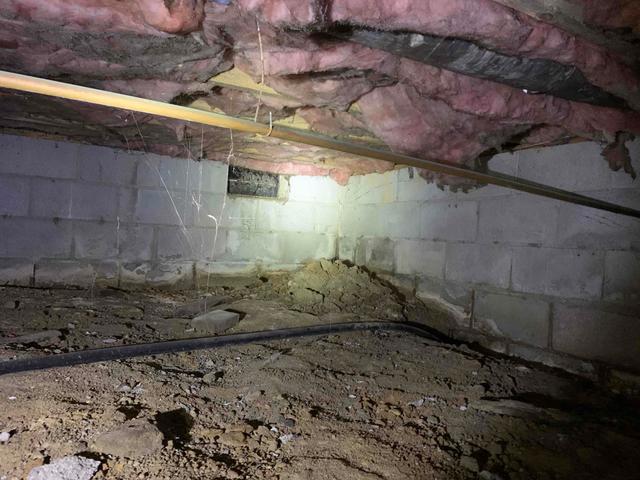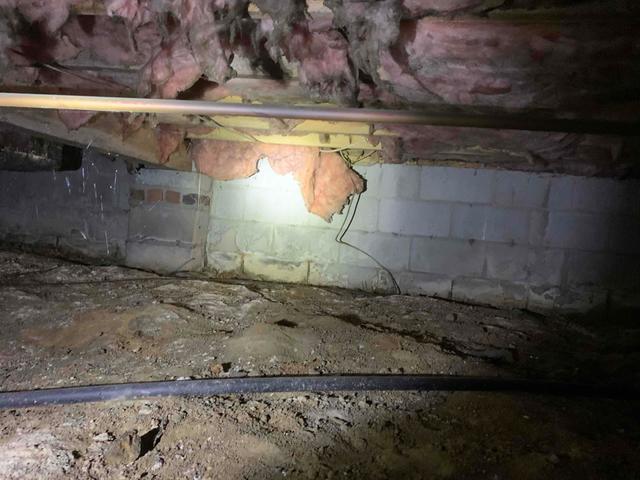
Moldew and Mildew
Mold and mildew have begun to grow on this homeowners' floor joists. Mold spores will thrive on any organic material in the crawl space, so long as the relative humidity is above 60%, and temperatures are warm. Mold and mildew will damage the organic framework of a home's foundation and send musty odors and spores up into the home, which can irritate those with allergies and asthma.

Fiberglass Insulation
The fiberglass insulation in this crawl space has begun to sag and fall to the floor. It is a clear sign of high relative humidity. The insulation acts as a sponge and absorbs much of the water in the crawl space. The water droplets pull apart the fine fibers of the insulation and cause it to rip and sag under the weight, eventually falling to the floor.

Open Vents
Open vents line the foundation walls of this crawl space. The idea behind them was that they would allow outside air to ventilate the crawl space and keep it dry during the summer months and closed vents would keep out cold air in the winter. The problem is that moisture and mold spores also find their way in and become trapped. The increase in moisture and temperature during warmer seasons leads to increased relative humidity and allows mold and mildew to grow and damage your home's foundation. During the cooler seasons, that cold dry air will settle in the underbelly of your home, making your floors cold and uncomfortable. The crawl space vents also allow critters to infiltrate the crawl space, which can even find their way into your home and contribute to poor indoor air quality.

Foundation Walls
Efflorescence is visible on these crawl space walls. This occurs when moisture seeps through the porous cinderblock walls, bringing to the surface the salts and minerals from within these blocks, weakening them. The infiltration of outside air and moisture will affect the air quality and relative humidity of the area, which can then lead to moisture damage, higher energy bills, and even mold and mildew growth in the right conditions.


